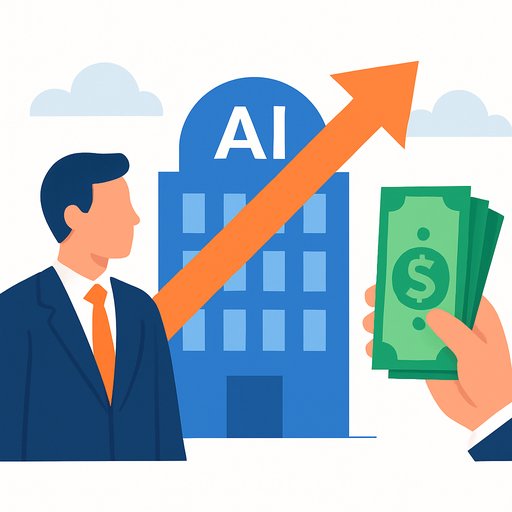AI in Investment Management: 5 Lessons From the Front Lines
AI is changing how investment teams research, decide, and operate. The upside is real, but the edge goes to leaders who combine machine leverage with human judgment, clear governance, and disciplined workflows.
Here are five lessons you can put to work across your team and investment process.
Lesson 1: Augmentation, Not Automation
AI creates leverage; it doesn't replace professionals. Despite the hype, only 0.01% of 44,000 UCITS funds in the EU explicitly include AI or ML in their formal strategies, yet LLMs and generative tools are widely used behind the scenes for research, synthesis, and productivity.
Generative AI can speed up data gathering, summarise filings, and surface ESG and regulatory insights. Evidence also shows it can lift the performance of less-experienced professionals by improving the speed and quality of their output.
- Use AI to automate data collection, first-draft research, and meeting summaries.
- Direct senior talent to use AI for hypothesis generation, scenario analysis, and variant perception.
- Set clear "human-in-the-loop" checkpoints before anything influences the portfolio.
Lesson 2: Use AI to Strengthen Decision Design
AI works well as a devil's advocate. It can pressure-test theses, expose blind spots, and parse sentiment across earnings calls, news, and social channels to flag shifting odds.
But opacity remains a constraint. Current GPT-style models can't explain how they arrive at outputs. Use explainable methods where possible and keep AI on the support side of the decision-not as the final arbiter.
- Build an "AI red team" step into every investment memo to surface counterarguments.
- Apply explainable techniques for model-based screens; log prompts, outputs, and rationale.
- Make portfolio decisions only after human review, with documented accountability.
Lesson 3: Protect Human Judgment
Overreliance on AI can dull critical thinking. Studies show people perform worse when AI support is removed after extended use-cognitive outsourcing is real.
Excess returns still come from contrarian thinking, probabilistic reasoning, and deep conviction. AI can draft a thesis, but people must own it.
- Run periodic AI-free drills: manual valuation, thesis building, and forecasting.
- Require analysts to defend their view without AI assistance before final sign-off.
- Separate "AI-generated" from "analyst-verified" insights in your research stack.
Lesson 4: Ethics, Bias, and Regulation Need Active Oversight
Liability risks rise when black-box tools influence outcomes. Bias in models can misprice assets, skew screens, or conflict with fiduciary duties.
The assumption that machines are more rational is false. Bias persists in current models-human guidance and governance are non-negotiable.
- Stand up an AI policy covering data sources, model risk, bias testing, and documentation.
- Provide explainability for any AI that influences decisions; audit frequently.
- Define escalation paths for exceptions and model drift; record decisions and rationale.
Lesson 5: Upgrade the Skill Stack
AI shifts advantage from rote work to meta-skills: critical thinking, creativity, prompt craft, and systems design. Managers should prioritise compound learning over tool-chasing.
Build capability in AI literacy and decision science, then reinforce with personalised learning paths supported by smart tutoring tools.
- Create a role-based curriculum covering data fluency, prompt strategy, and model limits.
- Pair juniors with AI for speed; coach seniors to turn AI outputs into differentiated insight.
- Measure skill adoption with portfolio post-mortems and research quality rubrics.
A Balanced Operating Model
AI scales research, accelerates synthesis, and sharpens debate. Its limits-opacity, bias, and overreliance-are manageable with clear rules, strong oversight, and a culture that rewards independent thinking.
Start with practical experiments, bake AI into workflows, and invest in human skills that compound the machine's strengths. For additional reading on industry perspectives, see the CFA Institute's Enterprising Investor analysis here. If you're building capability, explore curated AI tools for finance use cases here.
Bottom line: firms that combine AI augmentation with disciplined human judgment will create more consistent decisions-and better long-term outcomes for clients.
Your membership also unlocks:






